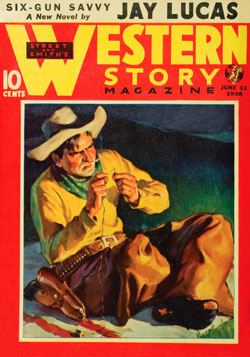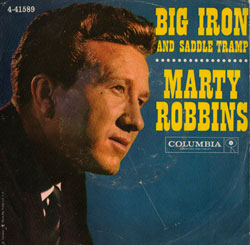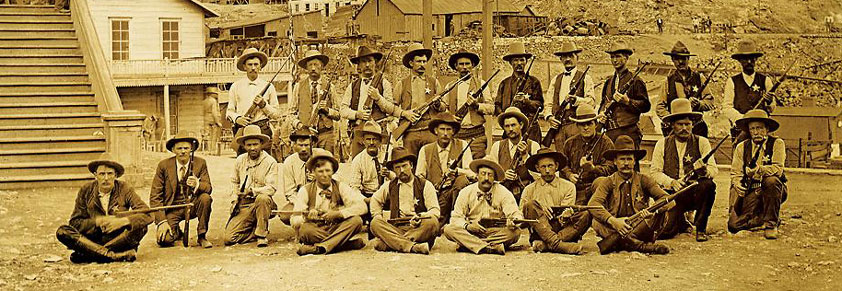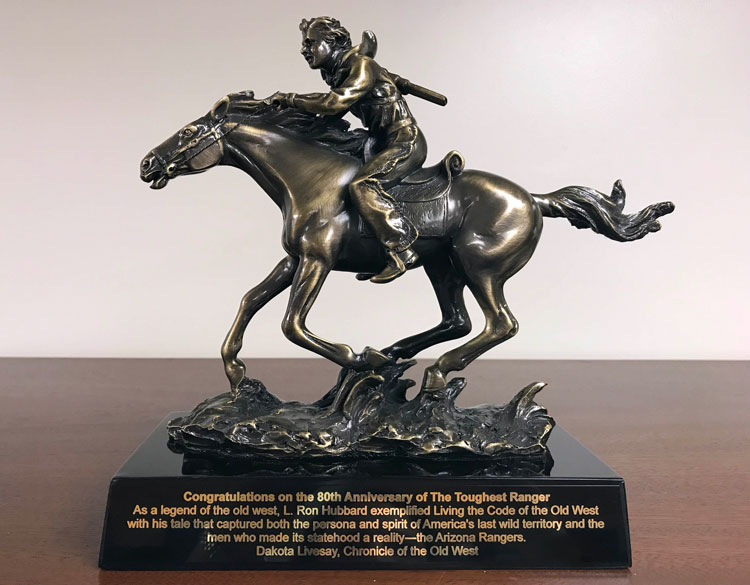How the Legacy of the Arizona Rangers Lives On
The fact that the Arizona Territory became the 48th state in the Union is common knowledge. Less known though is the story of the men who made this possible.
History books have detailed the accomplishments of the Arizona Rangers. However, it is through Western stories, TV and music that the Arizona Rangers will not just be remembered, but their legacy will live on.
The Arizona Rangers (1901 to 1909)
The Arizona Rangers were created by the Arizona Territorial Legislature in 1901. Simply stated, their purpose was to deal with outlaws who had grown in number. As other territories achieved statehood, criminal elements were driven to the sparsely populated and seeming haven of the Arizona Territory. The Arizona Rangers began with 14 men and grew to 26 men at its height. In 1909 the act establishing the Arizona Rangers was repealed. In total, 107 men served in the Rangers during this 8-year period.
In this 3-minute video, Dakota Livesay, publisher of Chronicle of the Old West, shows how and why the Arizona Rangers came into existence.
Present Day Arizona Rangers
The Arizona Rangers were re-established in 1957 and officially recognized by the state of Arizona in 2002. They exist now as an unpaid, all-volunteer, non-profit law enforcement support and assistance organization in the State of Arizona. They also provide support for youth and community services and work to preserve the tradition, honor, and history of the 1901–1909 Arizona Rangers.
For more detailed information about the history and mission of the Arizona Rangers, go to Arizona Rangers History or True West Magazine.
If you are interested to find out more about becoming an Arizona Ranger, contact Lt. Tom Williams, Exec Off Phoenix Branch, at [email protected].
The Arizona Rangers legacy also lives on through entertainment.
Western Stories and “The Toughest Ranger”
 Perhaps one of the first attempts to popularize the legend of the Arizona Rangers on a national scale was L. Ron Hubbard.
Perhaps one of the first attempts to popularize the legend of the Arizona Rangers on a national scale was L. Ron Hubbard.
L. Ron Hubbard grew up in turn-of-the-century Montana and loved the West. He understood the tradition and spirit of the frontier that had infused the daily life of his childhood. However, his familiarity with the West went well beyond just early adventures. He was also a dedicated student of the folklore and folkways of range riders and homesteaders, of Indian tribes and their turbulent pasts, of frontier towns and of the people who had crossed a continent to build them, and of the legends that lingered around them long after the original settlers were gone.
Such was the legend of the Arizona Rangers.
Originally published in the June 1938 edition of Western Story Magazine, “The Toughest Ranger” tells the story of a gun-shy cowboy by the name of Petey McGuire. Petey has been kicked around and bullied all his life. Faced with starvation, he bluffs his way into a job with the rough-’n’-tumble Arizona Rangers. But when he’s chosen to hunt down the most dangerous desperado in the territory, Petey’s forced to discover what it really means to be Ranger-tough.
Listen to a section from the full-cast audiobook production of The Toughest Ranger here:
If you are interested in tales of the old west, download “The Ghost Town Gun-Ghost” for free. It is a humorous Western where two unlikely allies take justice into their own hands.
Television and the 26 Men
 In November 1957, the first of 78 episodes of the television series 26 Men aired. The name of the series reflected the Arizona Rangers’ organization which consisted of a total of twenty-six men: a captain, a lieutenant, four sergeants, and twenty privates. One of the original Rangers was quoted as saying,
In November 1957, the first of 78 episodes of the television series 26 Men aired. The name of the series reflected the Arizona Rangers’ organization which consisted of a total of twenty-six men: a captain, a lieutenant, four sergeants, and twenty privates. One of the original Rangers was quoted as saying,
“The reason there was only twenty-six of us was because the Territory couldn’t afford no more.”
Based on true incidents from official records, the series centered on the Arizona Rangers’ attempts to maintain order throughout 113,900 square miles of territory during the final days of the Wild West.
Each episode began with the following:
This picture is dedicated to the 26 Arizona Rangers whose distinguished and heroic deeds made it possible for Arizona to become a state. This is a true story. Only the names have been changed to protect the innocent.
Music and the Big Iron
 In September 1959, Marty Robbins, one of the most popular and successful country and western singers of all time, recorded a ballad and tribute to the Arizona Rangers entitled “Big Iron.”
In September 1959, Marty Robbins, one of the most popular and successful country and western singers of all time, recorded a ballad and tribute to the Arizona Rangers entitled “Big Iron.”
As a youngster, Marty Robbins listened to tales told by his grandfather who claimed to be a Texas Ranger. In return, Marty would sing songs for his granddad. (For an in-depth and personal article of Robbin’s life, read Marshall Trible’s “Big Iron On His Hip” published in True West Magazine.)
Robbins hit song, “Big Iron,” is about a duel between an Arizona Ranger who carried a “big iron” and an outlaw by the name of Texas Red. Whether Texas Red ever lived or not is subject to debate, however, the Arizona Ranger’s “Big Iron” did exist. The gun was one-of-a-kind: A custom .45-caliber copy of the Colt single-action Army revolver with a cut-down Marlin rifle barrel. Robbins discovered it in Andy Anderson’s famed North Hollywood gun shop in the late 1950s which in turn inspired him to write the song. The rest is music history.
You can hear the ballad, “Big Iron,” (Provided to YouTube by Sony Music Entertainment) sung by Marty Robbins here:
“The Toughest Ranger” 80 Years Later
In honor of the Arizona Rangers, a radio-style performance of “The Toughest Ranger” took place in Hollywood at the L. Ron Hubbard Theatre featuring actors R.F. Daley, Darren Weiss, India Pearl, Bill Kates, Johnny Ferretti with special guest Dakota Livesay, publisher of Chronicle of the Old West and author of the book Living the Code. After the show, in recognition of the 80th anniversary of “The Toughest Ranger,” Dakota presented a bronze statue of a lone rider astride his horse to author L. Ron Hubbard.
Inscribed along the base are the words:
“As a legend of the old west, L. Ron Hubbard exemplified Living the Code of the Old West with his tale that captured both the persona and spirit of America’s last wild territory and the men who made its statehood a reality—the Arizona Rangers.”
For information about the original Western Short Stories written by L. Ron Hubbard, visit the Western Collection. The 15-book collection includes 34 short stories along with illustrations from the original publications and glossaries of historical terms.
Don’t forget to download your free copy of “The Ghost Town Gun-Ghost.”
Other articles and resources you may be interested in:
New to L. Ron Hubbard’s fiction? Start here.
Learn more about L. Ron Hubbard growing up in the Old West.
Leave a Reply
Want to join the discussion?Feel free to contribute!




Can we start this up again to replace fbi?
The AZ rangers are still active.
Wonderfulness! I’m sorry to say we still need them, but I’m glad they’re there to protect those of us who live in AZ. Good luck and good hunting to all of you wearing the badge!
Carolyn, are you related to any Padgett’s in Perry County, Ohio?
Trump needs this to replace FBI and drain swamp
Lol , he’s a traitor. Arizona rangers would’ve hung him . Just like Jack Smith is gonna do.
You’re 5 years late bud
This is a great blog! Do more like this!
The Arizona Rangers are looking for a few good men and women, especially those with horses, to join our mounted unit.
Contact: Lt. Colonel Richard Ellis
Deputy State Commander
[email protected]
Did anyone respond to this? If not, I will repost and share on other social media as I very much support what the Rangers are doing!
About 40 years ago, Martin Kempton of Chandler Arizona told young adults of the Chandler Stake ( LDS) about his grandfather that was an Arizona Ranger. Ambushed and killed in the southern AZ Chirriquawas.
It’s amazing the number of incredible stories I have heard about the Arizona Rangers.
i’d like to know how many, if any, of the Rangers were Freemasons.
Unfortunately, I haven’t a clue.
It is a privilege and an honor to be associated with the Arizona Rangers. I truly enjoy researching and writing about these brave men. Someone once said that “Hard times make heroes”. The (1901 to 1909) Rangers epitomize the heroes that helped subdue the criminal element and allowed Arizona to become the 48th. state in 1912. Many thanks for this article, I always enjoy learning more about our Rangers..
I heartily agree. And thank you for your kind words about this article.
I am looking forward to coming to the USA in 2022 and am determined to visit Arizona and see anything relating to the Rangers and their existence.
That’s great and I hope it’s a worthwhile quest finding what you want.
I used to watch the TV show Twenty Six Men, always enjoyed the program. Marty Robins is one my favorite C&W singers. I didn’t realize that Big Iron was about the Arizona Rangers. Thank you for all the information about the Arizona Rangers.
You are welcome, Zeda. I am glad you enjoyed the information in this article.
“… Was an Arizona Ranger, wouldn’t be in town too long” Its in the song.
My uncle Tip Stamford is in this photo. First saw it in a 60’s Field and Stream mag. My grand mother said he was the left, standing.
5th from the left.
Thank you love history this was so interesting learned a lot
Thank you for sharing this was not aware of this about the Arizona rangers. Was not aware that big iron on your hit was written for the Arizona rangers by Marty Robbins. I’ve always loved that song. I will follow up on this about the Arizona rangers definitely make me read more about Arizona. As I do follow the old west thank you very much. God bless stay safe and well
I remember this song from listening to it during my childhood. I believe my friend’s father had the 45 record Of course, at that time, I did not know the history of the Arizona Rangers.
Actually, the “Big Iron” is a nickname for the .44 calibre Colt Walker. The Colt Walker was designed in collaboration with Texas Ranger Captain Samuel Walker. Walker had used Sam Colt’s other early percussion revolvers in Calibres .24, .31 and .38 and wanted a larger calibre gun with more power for the Texas Rangers. Samuel Walker travelled North to Baltimore and New York looking for men to recruit into the Rangers. He took the opportunity to find Sam Colt who was unfortunately nearly broke at the time. Sam designed the new gun and then had to find someone with the machinery to manufacture the 1000 gun order. The Colt Walker was very much larger than the other guns Colt had produced (15 inches long and four and a half pounds unloaded) and it was soon nicknamed “Big Iron”. It also had a muzzle velocity about 200 ft/sec faster than the earlier smaller calibres. But it was probably not a fast draw gun due to the weight and length. Man sized target accurate to 40 feet is probably also a stretch … but let’s not criticise the myth, the song or the tape measure too much.
That is not to say that Marty Robbins did not see a Colt Peacemaker in .45 calibre cartridge bullet firing and attribute the “Big Iron” nickname to that more common Colt firearm.
I always enjoy re-reading this wonderful article from time to time in order to remind even myself – the 8th Ranger State Historian since 1956 – about our organization’s colorful history, both in fact and fiction!
The “modern day” Arizona Rangers are over 500-volunteers-strong, stationed in 23 Ranger “companies” across the Grand Canyon State! (Sonoita Company was recently resurrected as the 23rd). If you are an Arizona resident with no criminal history, a current/valid AZ CCW, and an honest desire to assist law enforcement agencies at the federal, state, county and municipal levels, please visit our website, which will direct you to a recruiter in your area.
Thank you! This was one of the most fun articles I have written.
And an excellent article it is!
Thank you, Nick!
John, I have been attempting to get permission to reproduce your article in my Arizona Rangers quarterly periodical, “Report To The Commander,” but have received no known response from anyone at Galaxy Press. The “report” goes out primarily as a PDF “e-book,” is not sold and makes no monies/profits. Any recommendations who I can contact directly for permission to reprint the article? You and Galaxy Press would get full author credit, of course. Thanks! -Nick
Hello Nick, Please write to me as I am the author of the article. I am OK with you reprinting. Email me at [email protected]
Best,
John
It was my distinct privilege and honor to serve as a State Commander of the Arizona Rangers, 2018-2019! May they continue to do their great work!!
Is there a list of names in order of the first 14 Rangers
I have in my collection all the episodes of the 26 men tv show except 6 episodes which were still missing I knew Kelo Henderson who stared on the show We had a few conversations on the phone. Quite a few years ago now. The show stood out because they had in the beginning of some of the episodes the original rangers introducing the episode. This was my favorite western series.
Who had gun # 8